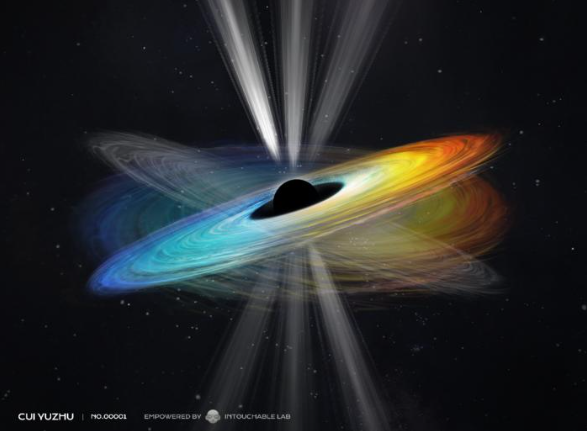In a groundbreaking revelation, scientists have confirmed that the supermassive black hole at the center of the Messier 87 (M87) galaxy is spinning. This discovery adds another layer of understanding to one of the universe's most enigmatic and powerful phenomena.
The M87 black hole first made headlines in 2019 when researchers, using a virtual telescope as large as Earth, unveiled its first-ever image. This was achieved by amalgamating data from observatories worldwide. The image, which showcased a glowing, fuzzy silhouette, was featured in major newspapers globally, marking a significant milestone in astrophysics.
The recent analysis, which spanned over two decades of observations of M87's core, has now shed light on the black hole's dynamics. "After the success of black hole imaging in this galaxy with the Event Horizon Telescope, whether this black hole is spinning or not has been a central concern among scientists," remarked Kazuhiro Hada, an astrophysicist from the National Astronomical Observatory of Japan. He added, "Now anticipation has turned into certainty. This monster black hole is indeed spinning."
Using a vast network of over 20 telescopes, the research team analyzed 170 observations of M87 from 2000 to 2022. While the gravitational pull of black holes is so immense that even light cannot escape, making direct observation within the event horizon impossible, scientists could monitor the black hole's impressive jet. This jet, which extends 4,900 light-years and appears to move almost five times faster than light due to an optical illusion known as superluminal motion, has been a subject of study since its first observation in 1918.
The team discerned that the black hole was gradually altering the angle of its jet by approximately 10 degrees before reverting to its original position, a cycle that took about 11 years. This variation in the jet's tilt allowed the researchers to deduce the presence of a spinning black hole. Such rotating black holes warp the surrounding space-time, a phenomenon termed frame-dragging, leading the accretion disk and the jet to tilt.
M87 has long captivated astronomers. First observed in 1781 by Charles Messier, the galaxy, located in the Virgo constellation, was later named Messier 87 or M87 in his honor. The black hole at its center has been a focal point of research, especially given its proximity, being only 54 million light-years away.
Many black holes are believed to spin at nearly the speed of light. For instance, a black hole in the NGC 1365 galaxy, approximately 60 million light-years away, was found to rotate at 84% of light's speed in 2013. Another was determined to spin at half the speed of light in 2019.
The discovery underscores the importance of continued exploration of black holes, as these cosmic giants hold clues to understanding the very fabric of our universe.






